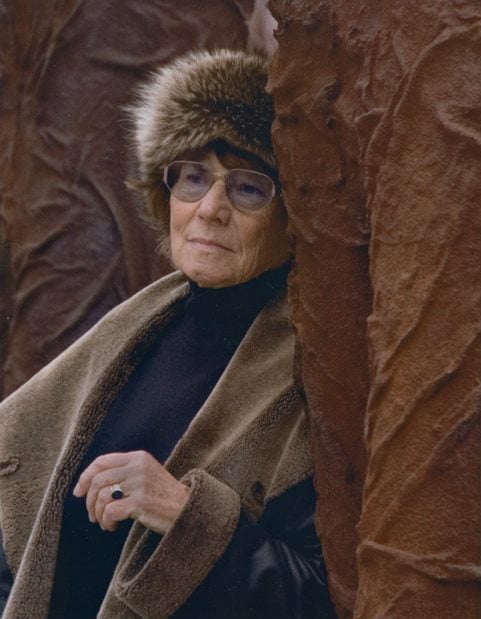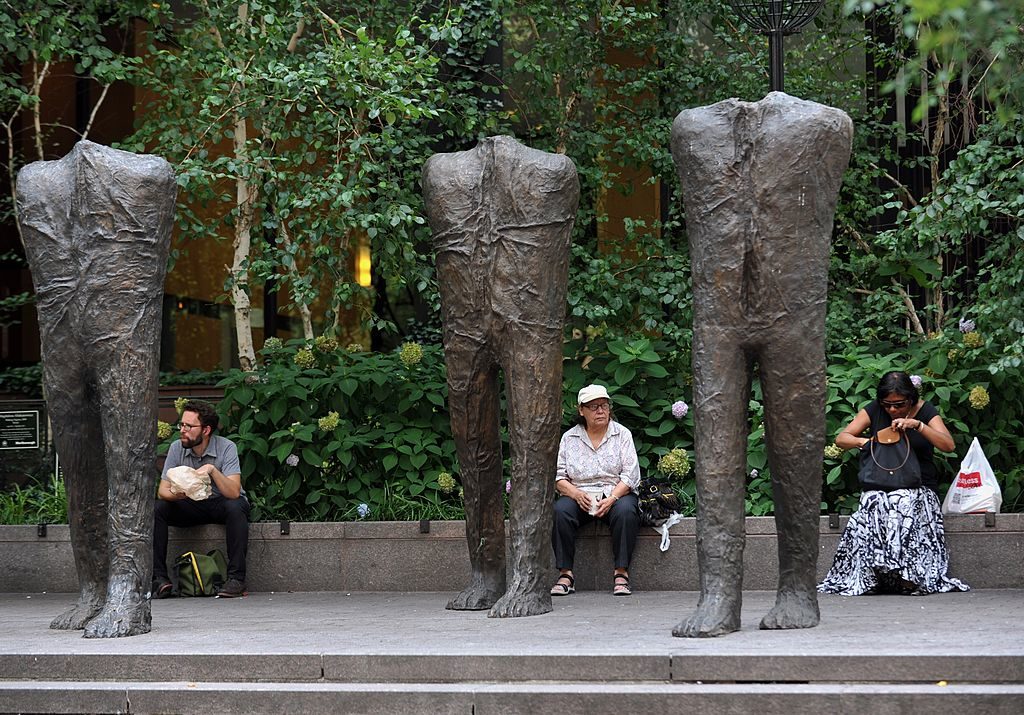People
Polish Artist Magdalena Abakanowicz, Who Sculpted ‘the Problems of Mankind,’ Dies at 86
Her fabric works and monumental sculptures made her a star.

Her fabric works and monumental sculptures made her a star.

The Polish sculptor Magdalena Abakanowicz died on Thursday in Warsaw at the age of 86. Her husband Jan Kosmowski told the New York Times she died after a lengthy illness.
Abakanowicz is considered one of Poland’s most prominent postwar artists. She dealt extensively with the themes such as acceptance, fear and aggression, her work was shaped by the horrors of growing up during World War II and subsequent Communist rule in Poland.
Abakanowicz started her career as a painter after being rejected from the sculpture program at the Academy of Fine Arts in Warsaw. Before long, however, her experiments with fabrics and fibers led to a soft three-dimensional series of works dubbed “Abakans.” She also developed her own weaving technique, and later she began making larger, solid sculptures and installations for which she won the Grand Prix at the 1965 São Paulo Biennial.
“She showed that sculpture does not need to be in one block, that it can be a situation in space and that it can be made of fabrics,” the Polish art critic Monika Branicka told the Daily Mail.

Scuptures by Magdalena Abakanowicz titled “Walking Figures, 2009” July 17, 2012 at Dag Hammarskjold Plaza in New York. Photo: STAN HONDA/AFP/GettyImages.
Throughout the 1970s and 1980s, her work took on an increasingly monumental scale. Works such as Bois-le-Duc (1970-71), a cluster of darkened 26-foot panels, and Black Environment (1970-78), which featured a group of 15 semi-figurative black sculptural forms, attracted international critical acclaim.
In 1980, she represented Poland at the 1980 Venice Biennale, where she presented 40 sculptures of hunched torsos, titled Backs. She later told the Chicago Tribune of the series: “I was asked by the public: ‘Is it about the concentration camps in Poland?’ ‘Is it a ceremony in old Peru?’ ‘Is it a ritual in Bali?’ To all these questions, I could answer yes because my work is about the general problems of mankind.”
Her international profile was further boosted by US institutional exhibitions in the early 1970s in Pasadena and a traveling retrospective organized by the Museum of Contemporary Art in Chicago in 1982.
In a statement, Polish culture minister Piotr Glinski hailed the legacy of the most important Polish artist in recent memory and said her death was “sad news for Polish culture.”